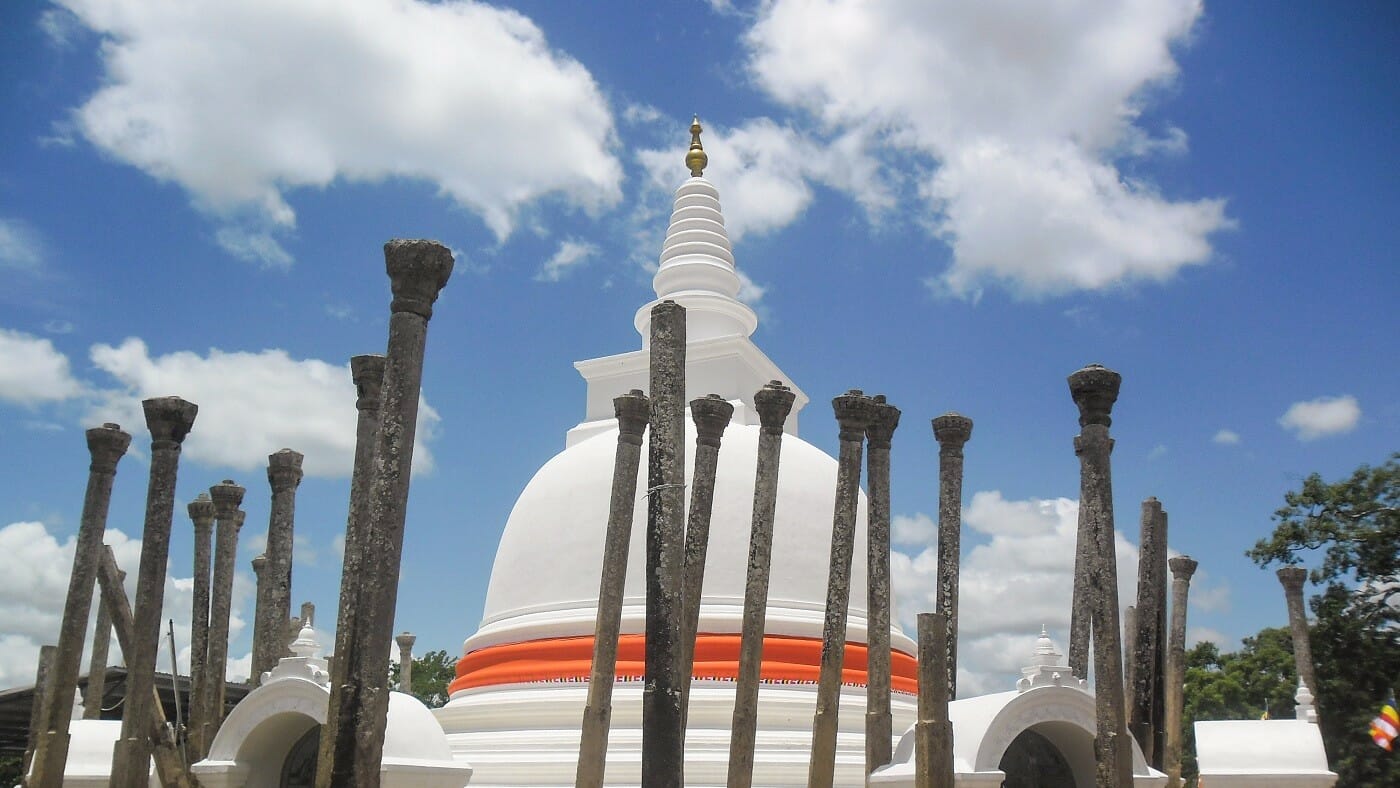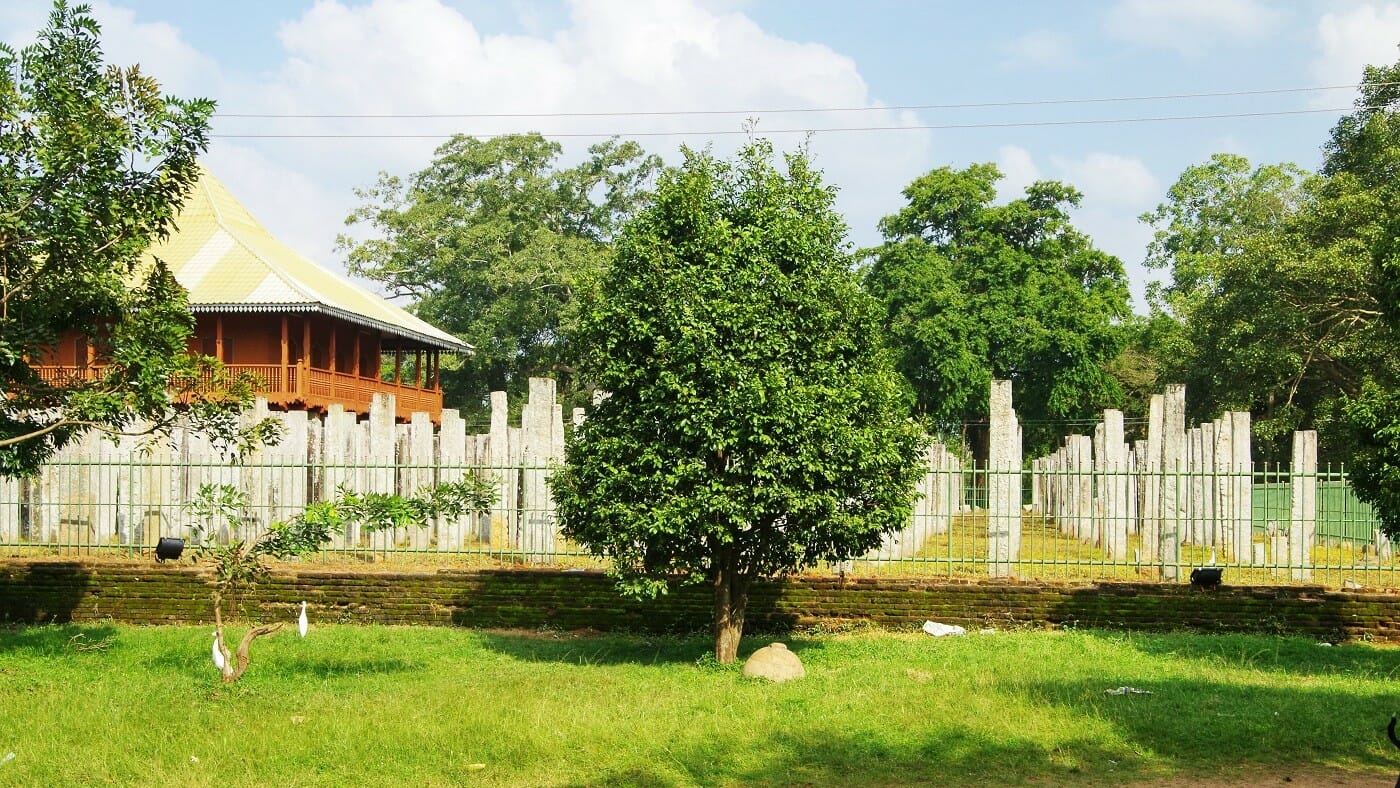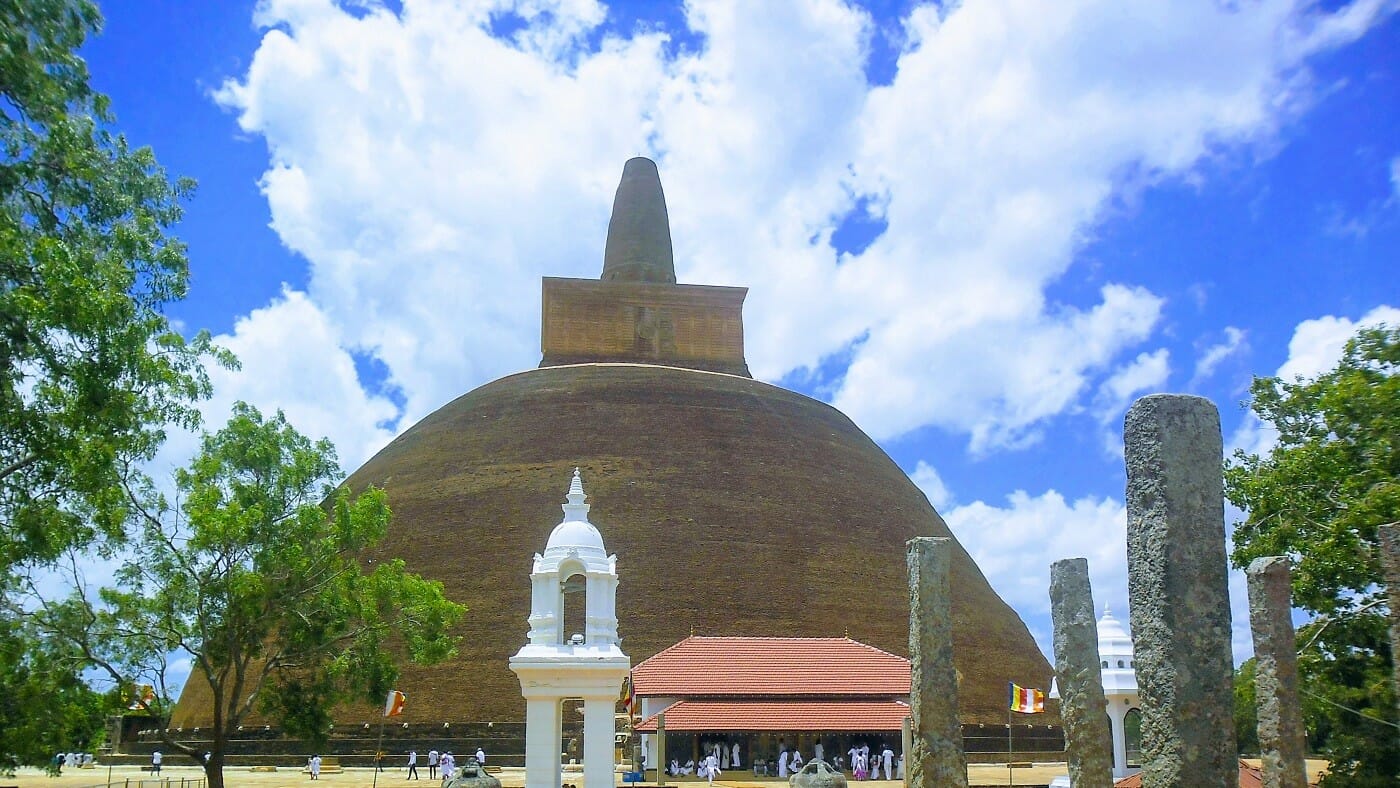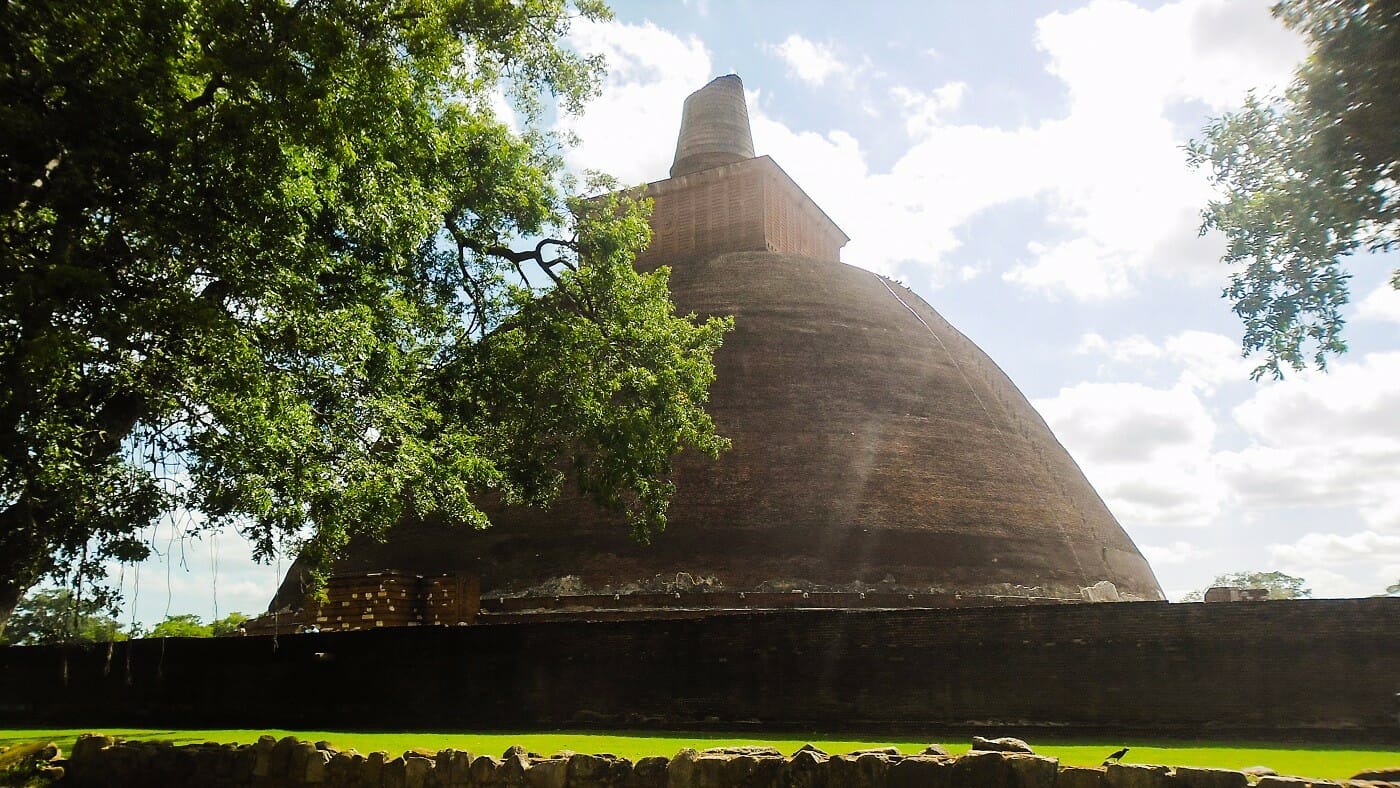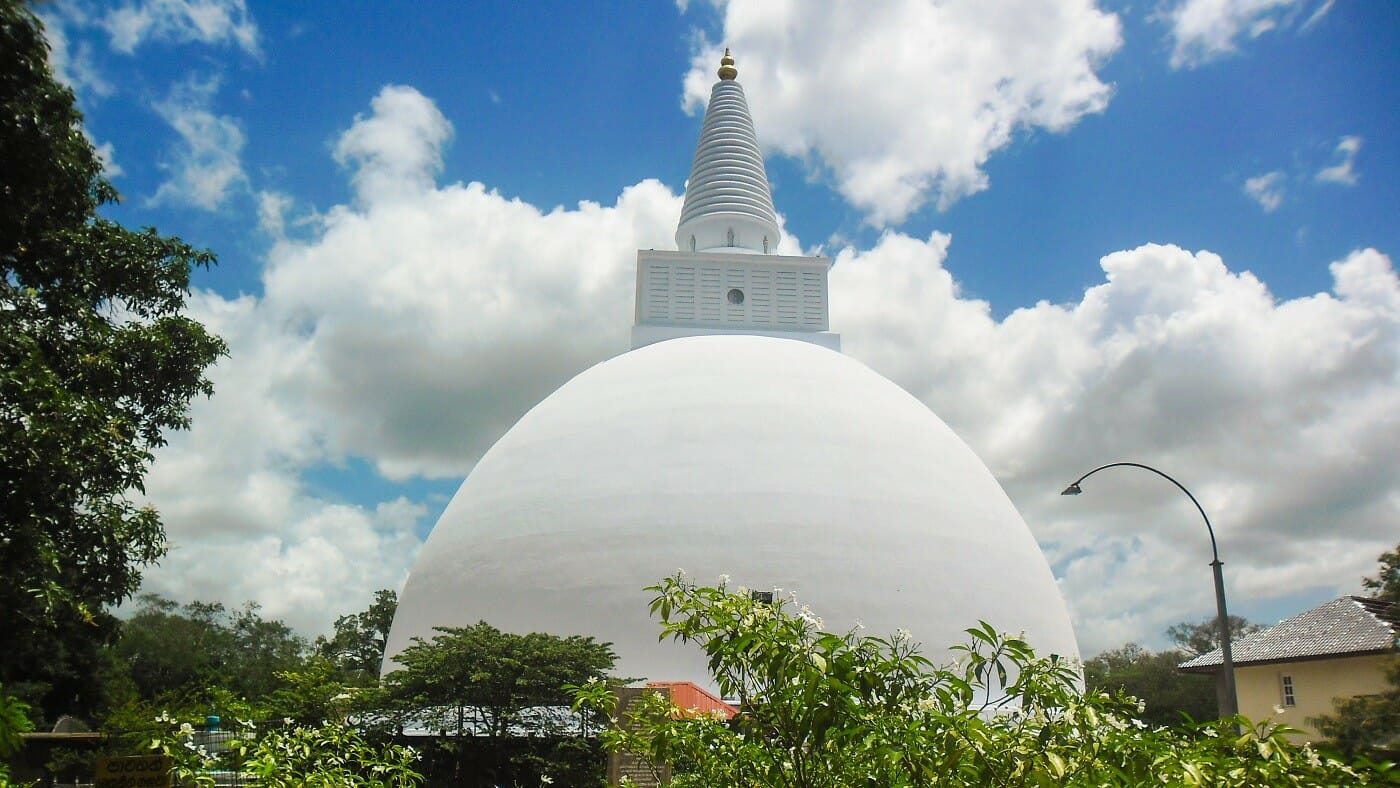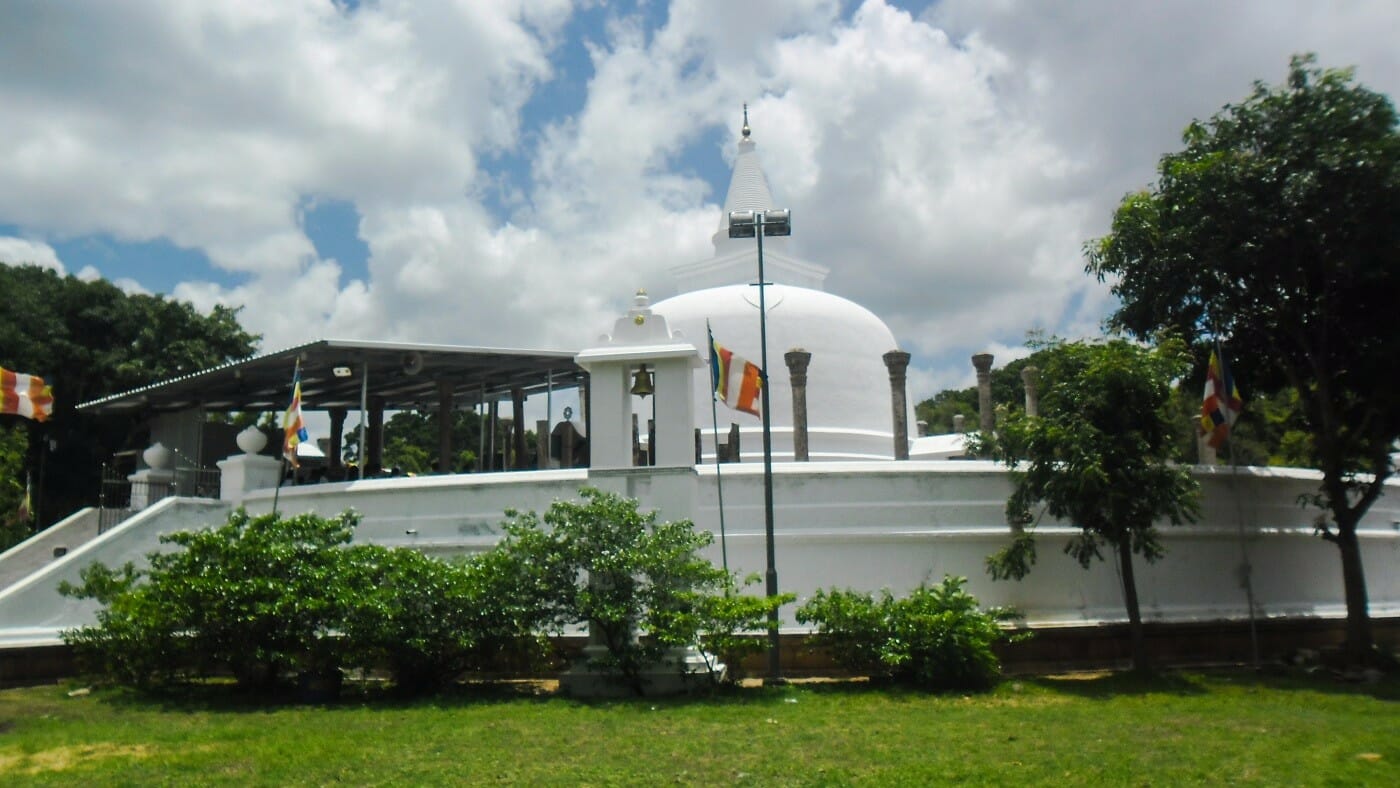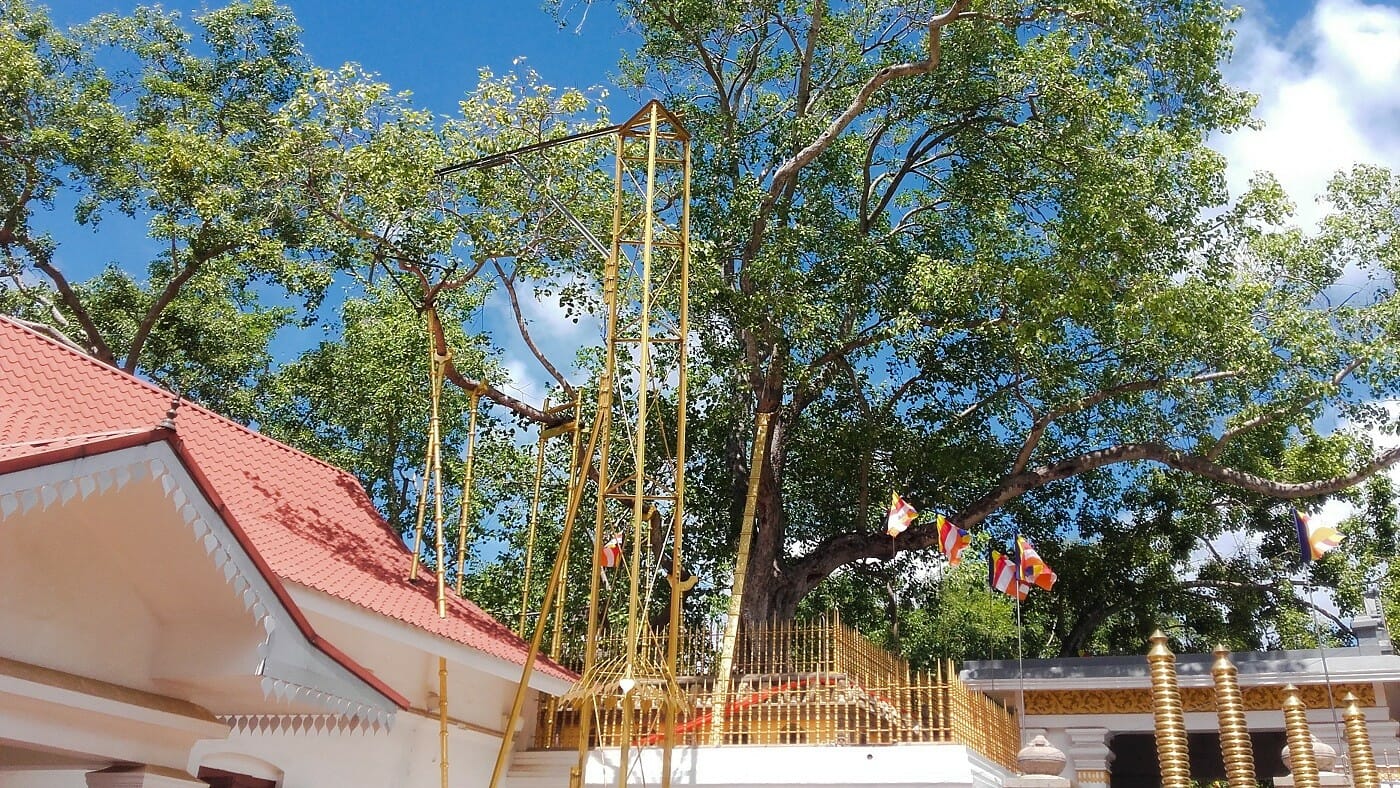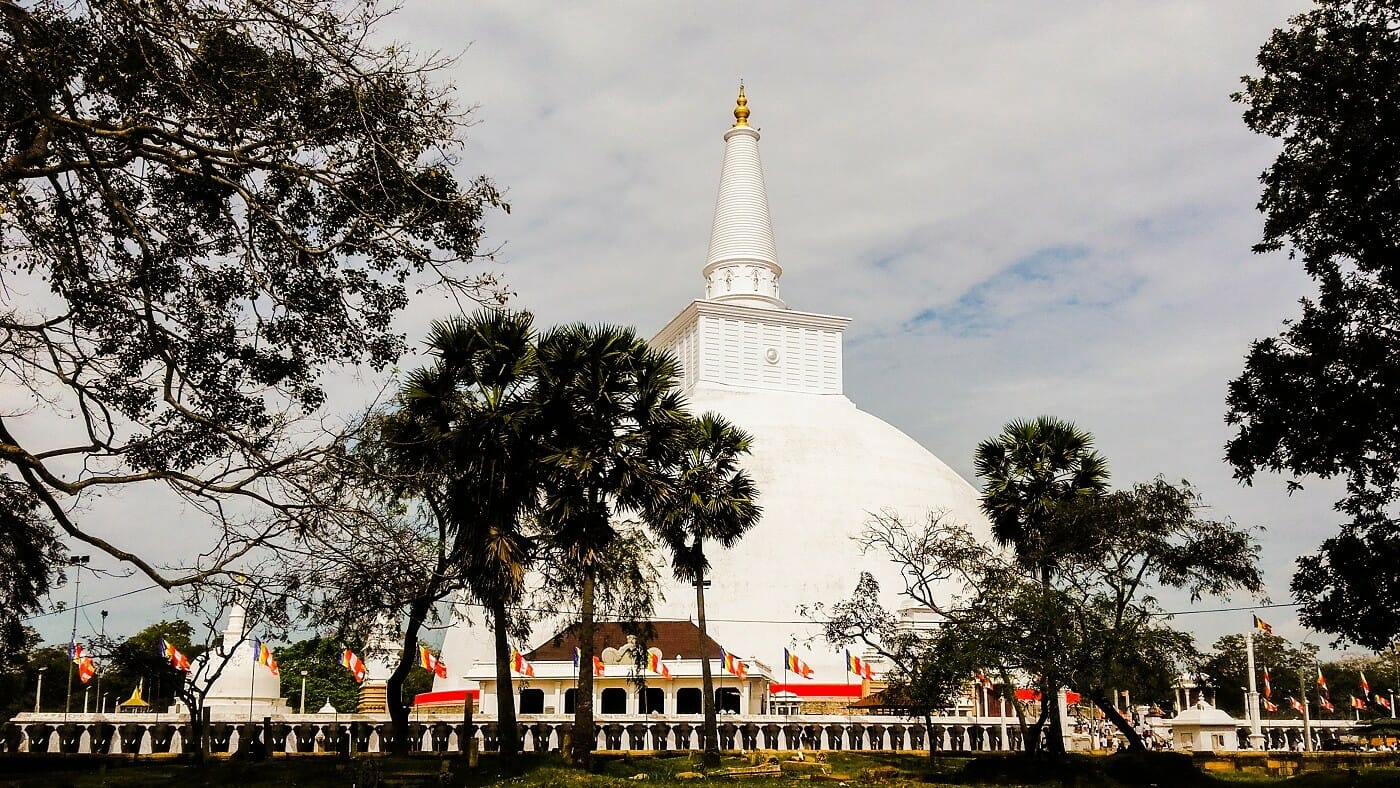Favorite
Thuparamaya is considered to be the first Stupa built in Anuradhapura, after the introduction of Buddhism to Sri Lanka. It is also one of the “Atamasthana” (8 most sacred places of Buddhists in Sri Lanka). The stupa was built during the reign of King Devanampiyathissa (307 BC to 267 BC). It is believed that the stupa enshrines the right collarbone Relic of the Lord Buddha. Thuparamaya Read more...
Favorite
The Lovamahapaya is one of the Eight Sacred places known as “Atamasthana” and it is located in the Sacred City of Anuradhapura in North Central Province, Sri Lanka. When you walk towards Ruwanweliseya from Sri Maha Bodhiya, The Lovamahapaya can be seen on your right-hand side. According to the Mahawamsa, the Lowamahapaya was a nine-story building and It was built by the King Dutugemunu (161-137 BC). You can read more about this place by visiting the external links given below. Photo Credit: Balou46, ChampikaG External Links: King Dutugemunu’s gracious gift to Maha Sangha The Entrance Into the Tusita-Heaven Read more...
Favorite
Abhayagiri Stupa is the second-highest stupa in the country and it is located in Anuradhapura District of North Central Province, Sri Lanka. It is one also of the Eight Sacred places known as “Atamasthana”. The stupa was built by King Valagamba was also known as Vattagamani Abhaya and Valagambahu in 1st century BC. According to legends, the king has built this stupa to commemorate some incident that happened while he escaping from one fight with Tamil invaders. According to this legend, a Jain monk called Giri has shouted at the king saying “the great black Sinhalese is fleeing” while he was passing Read more...
Favorite
The Jetavanaramaya is one of the Eight Sacred places known as “Atamasthana”. It is located in the Sacred City of Anuradhapura in the North Central Province of Sri Lanka. The Jetavanarama Stupa was built by King Mahasen (276-303). During the reign of King Mahasen, this has become a center of Sagalika sect (also it is said that the Sagalika sect has started in Jetavanaramaya). This stupa was rehabilitated for the last time by King Parakramabahu in the 12th century. It is believed that this stupa has enshrined a part of a sash or belt tied by the Lord Buddha. Read more...
Favorite
The Mirisaweti Stupa is located in Anuradhapura District of North Central Province. The stupa has been built by the king Dutugemunu (161BC – 137BC) after defeating South Indian invader king Elara. According to the legends, one day the King Dutugemunu had gone to Tissa Wewa for a bath leaving the scepter here. Once he returns to the scepter, it is said that it could not be moved from that place. As a result, the King has constructed this Stupa on the place where the scepter stuck. It is also said that it had been a practice of the King Dutugemununu Read more...
Favorite
The Lankaramaya Stupa is one of the Eight Sacred places known as “Atamasthana”. The stupa was built during the 1st century B.C. by King Walagamba (89 B.C. – 77 B.C.). It is located in Anuradhapura District of North Central Province, Sri Lanka. According to chronicales, this place was also known by the names Silasobbakandaka and Galhebakada. Initially, this stupa was known as Somarama Stupa in commemoration of Queen Soma who saved the life of the king. There are three rows of stone pillars that can be seen around the stupa and it is evident that there had been a house Read more...
Favorite
Jaya Sri Maha Bodhi is a Sacred Bo-Tree in the Mahamewna Gardens, Anuradhapura District, North Central Province of Sri Lanka. It is said to be the southern branch of the historical Sri Maha Bodhi at Buddha Gaya in India under which Lord Buddha attained Enlightenment. Jaya Sri Maha Bodhi was brought to Sri Lanka by the Theri Sangamitta, daughter of Emperor Asoka, and was planted in the Mahamewna Gardens in Anuradhapura in 288 BC by King Devanampiyatissa. Jaya Sri Maha Bodhi is the oldest living human-planted tree in the world with known planting date. Today it is one of the Read more...
Favorite
The Ruwanwelisaya is a stupa in Anuradhapura District in North Central Province of Sri Lanka, considered a marvel for its architectural qualities and sacred to many Buddhists all over the world. This is one of the Solosmasthana and Atamasthana. This was built by King Dutugemunu in 140 B.C. The stupa is also known as Ruwanweli Maha Seya, Swarnamali Chaitya, Rathnamali Dagaba and Mahathupa. Read more...
